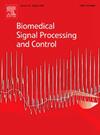Constrained optimal control drug scheduling models with different toxicity metabolism in cancer chemotherapy
IF 4.9
2区 医学
Q1 ENGINEERING, BIOMEDICAL
引用次数: 0
Abstract
In cancer therapy optimization, various methods exist for modelling and managing the mathematical dynamics of cancer, each tailored to specific objectives. Among these, optimal control theory remains a powerful method for minimizing drug delivery in cancer therapy protocols, despite recent advancements in alternative methodologies. This method aligns with pharmacokinetic and pharmacodynamic principles, ensuring efficacy and allowing for the exploration of emerging techniques.
This study utilized bang-bang optimal control through discretization and nonlinear programming techniques facilitated by the Applied Modelling Programming Language (AMPL), linked with the Interior-Point optimization solver (IPOPT). This approach enabled the determination of extremal solutions that satisfied the system’s constraints. A key modification introduced was replacing the Heaviside function with a sigmoid function for smoother drug effect transitions while incorporating an additional equation for healthy cell dynamics. Interestingly, numerical results showed no significant difference between the Heaviside and sigmoid-based models, suggesting that the optimal control strategy remains unchanged and inherently favours bang-bang solutions.
The optimal control solutions demonstrated adaptability across various physiological conditions during cancer treatment, quantified through performance indices and residual cancer cell counts. Our results support the superiority of optimal control, achieving the highest performance index (31.1132) and the lowest residual cancer cell count (0.0307).
This study underscores the utility of optimal control in improving cancer treatment efficiency, reducing medication use, and lowering overall costs while enhancing the real-world applications of mathematical modelling in healthcare.

肿瘤化疗中不同毒性代谢的约束最优控制药物调度模型
在癌症治疗优化中,存在各种方法来建模和管理癌症的数学动态,每种方法都针对特定目标量身定制。其中,最优控制理论仍然是减少癌症治疗方案中药物输送的有力方法,尽管最近在替代方法方面取得了进展。该方法符合药代动力学和药效学原理,确保疗效并允许探索新兴技术。本研究通过应用建模编程语言(AMPL)的离散化和非线性规划技术,结合内点优化求解器(IPOPT),利用bang-bang最优控制。这种方法能够确定满足系统约束的极值解。引入的关键修改是将Heaviside函数替换为s型函数,以实现更平滑的药物效应过渡,同时纳入健康细胞动力学的附加方程。有趣的是,数值结果显示Heaviside和基于sigmoid的模型之间没有显著差异,这表明最优控制策略保持不变,并且本质上更倾向于bang-bang解决方案。最优控制方案在癌症治疗过程中表现出对各种生理条件的适应性,并通过性能指标和残余癌细胞计数进行量化。我们的研究结果支持了最优控制的优势,实现了最高的性能指标(31.1132)和最低的残留癌细胞计数(0.0307)。本研究强调了最优控制在提高癌症治疗效率、减少药物使用和降低总体成本方面的效用,同时增强了数学建模在医疗保健中的实际应用。
本文章由计算机程序翻译,如有差异,请以英文原文为准。
求助全文
约1分钟内获得全文
求助全文
来源期刊

Biomedical Signal Processing and Control
工程技术-工程:生物医学
CiteScore
9.80
自引率
13.70%
发文量
822
审稿时长
4 months
期刊介绍:
Biomedical Signal Processing and Control aims to provide a cross-disciplinary international forum for the interchange of information on research in the measurement and analysis of signals and images in clinical medicine and the biological sciences. Emphasis is placed on contributions dealing with the practical, applications-led research on the use of methods and devices in clinical diagnosis, patient monitoring and management.
Biomedical Signal Processing and Control reflects the main areas in which these methods are being used and developed at the interface of both engineering and clinical science. The scope of the journal is defined to include relevant review papers, technical notes, short communications and letters. Tutorial papers and special issues will also be published.
 求助内容:
求助内容: 应助结果提醒方式:
应助结果提醒方式:


